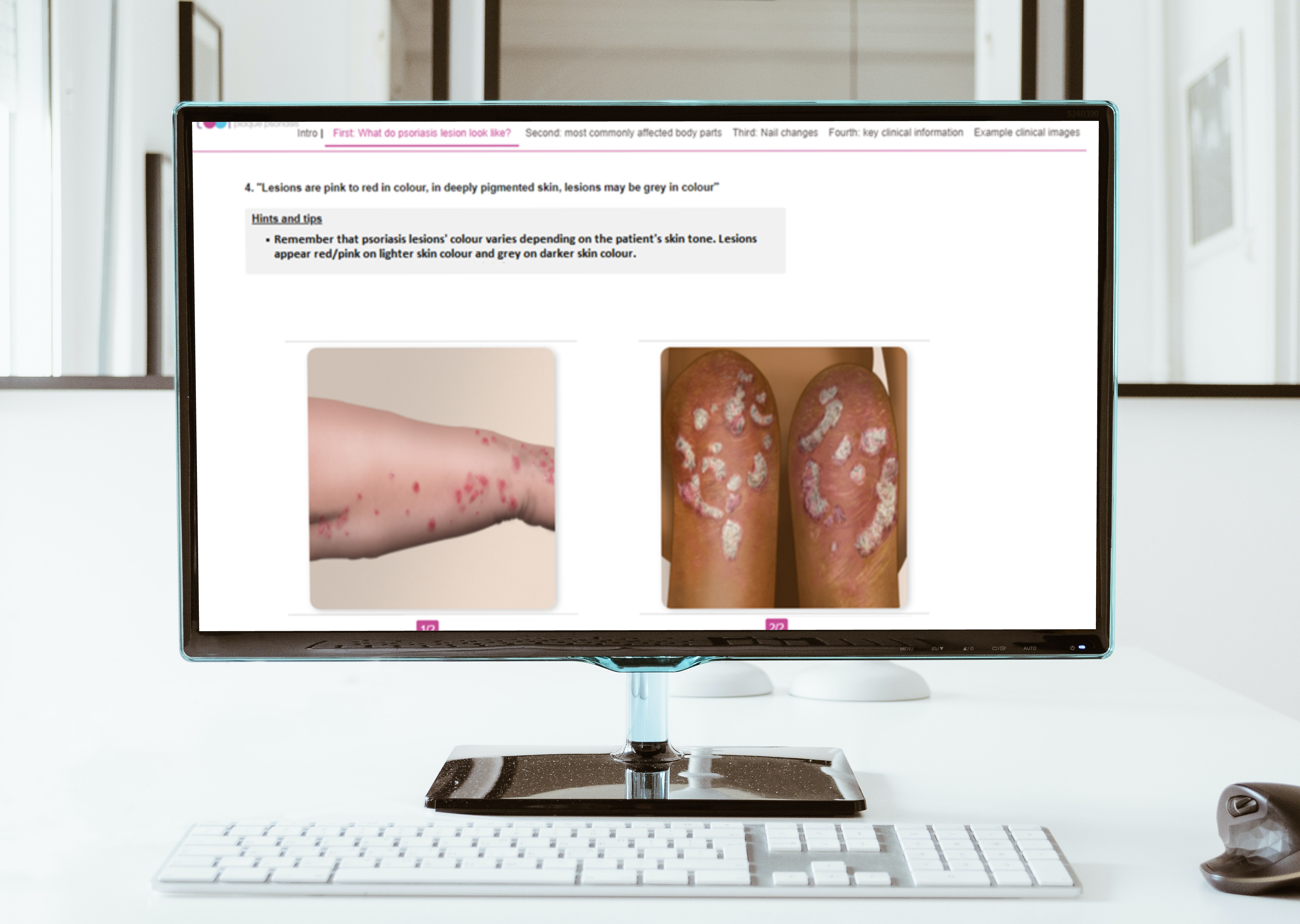The Global Psoriasis Atlas Training Tool
12 November 2022
By IFPA
Psoriasis affects up to 60 million people worldwide and presents as symmetrical, well-demarcated, raised plaques most commonly on the knees, elbows, trunk, and scalp. The plaque colour varies in presentation depending on skin colour. On white skin the rash is pink or red in colour with silvery scale, however, in brown or black skin the lesions are grey.
In many countries around the world, psoriasis is misdiagnosed and unrecognised leading to either inappropriate or delayed care. To address this issue the Global Psoriasis Atlas (GPA) has collaborated with patients, dermatologists, and other healthcare providers internationally to ascertain the key, diagnostic features of psoriasis and then develop an educational resource (training tool) for healthcare providers to help them identify chronic plaque psoriasis correctly in any skin colour and in any setting. The content of the training tool was based on recommendations from 50 expert dermatologists from 27 countries across 6 continents who have more than 20 years’ experience in diagnosing and treating psoriasis in patients from different ethnic backgrounds.
The training tool will be available for healthcare providers to access via the GPA website.
The training tool was supported by paintings of psoriasis on different skin colours to overcome the limited availability of representative clinical images for psoriasis on black skin.

A screenshot from the Global Psoriasis Atlas training tool.
The tool is developed by PhD student Maha Abo-Tabik. She said, "My aim is to contribute towards improving early and accurate diagnosis of psoriasis. As a member of the GPA, I had the opportunity to work with a group of expert dermatologists from around the world to set recommendations for psoriasis diagnosis on different skin colours."
Learn more at globalpsoriasisatlas.org.
Learn more about diversity and inclusion in psoraitic disease. Visit All the Colors We Are.
Sign up to our newsletter
